Textured paint according to experts in interior decoration is great choice in terms of quality and price. It is a special material resembling a homogeneous viscous mass white color. If acrylic is introduced into the composition of such a paint as a binder, the resistance of textured paint to changes in humidity and mechanical deformations is significantly increased.
Adding a variety of colors to the composition leads to the desired colors, makes it possible to obtain the desired shades.

Advice ! You can order a specific shade from manufacturers facade paint receiving quality assurance.
Textured paint can be used to decorate any surface, even with minor defects, their depth should not exceed 2 mm. Depending on the method of applying the paint, it is possible to return the surfaces aesthetic appearance. This paint has a dense texture, which is why it can be used to get rid of defects.
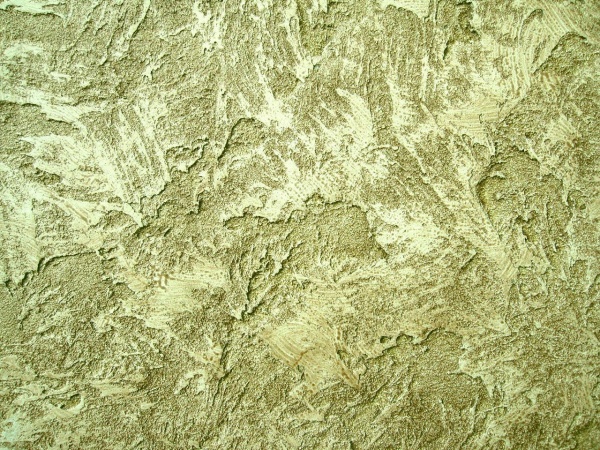
The main advantages of textured materials
This coating in terms of practicality is ahead of the wallpaper and Wall panels. Textured paint is not afraid of high humidity, mold. Finished coating can be maintained with soap solution. The paint can be applied to any type of surface, including brick, concrete, wood. In addition to acrylic components in textured mixtures, there are special mineral supplements- emulsions.
The main advantages of textured compositions:
- resistance to the negative effects of ultraviolet radiation;
- excellent decorative properties;
- good vapor permeability
It should also be mentioned that this decorative coating does not absorb foreign odors, does not contain harmful substances easily withstands temperature fluctuations.
Manifold technical properties of these paints indicates that they are ideal for facade works, interior decoration premises.
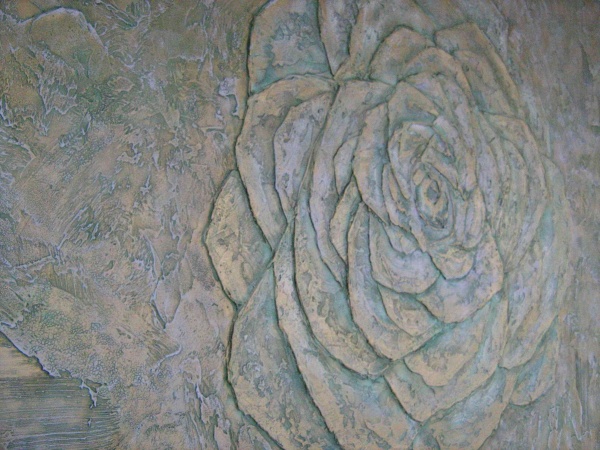
Application methods
The use of facade mixtures in modern design gives a chance to show all your imagination, create a unique version of the interior in the room. Texture paints make it possible to imitate natural marble, fabric, floral ornaments. To implement the plan, you need to master the technology of applying the texture composition, use special tools and materials.
The relief surface of the wall can be made using as a filler sawdust. To create a smooth texture, ordinary water is required.
Sharp edges can be obtained using quartz sand as a filler.
To fully work with textured paints, you will need certain tools:
- putty knife;
- brushes;
- natural sponge;
- rollers different size and forms
Using a brush, after the material hardens, you can make fancy pictures on the wall.
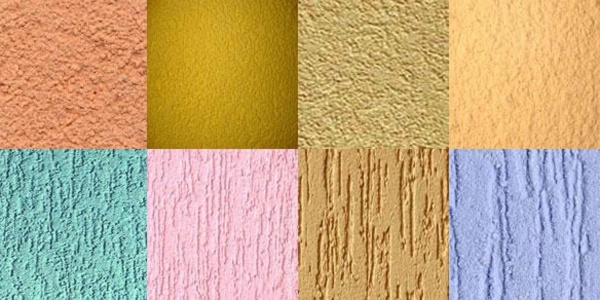
Attention ! When creating a uniform wall structure, you must first apply horizontal stripes to it, then vertical ones. When choosing a roller, keep in mind that you will need several rollers at once, differing in width.
The paint base is applied with a wide roller, performing vertical movements. To eliminate inaccuracies, work in hard-to-reach places use a small roller.

If you wind a rope around the roller, the up and down movements can imitate the stems of plants on the wall. If desired, you can purchase special rollers on which a certain pattern is applied. A spatula will help you make unusual stains on the wall. For paint that contains a coarse filler, a coarse spatula is suitable. Use a soft spatula to create delicate textures. To obtain unique patterns, you can use ready-made stencils. A two-color pattern on the wall can be done using the following method:
- Apply base paint to the wall. Until it is completely frozen, do sharp object horizontal stripes.
- Apply a solution of the second color, armed with a stencil.
As a result, you will get a drawing, the effect of which will be added by a relief surface.
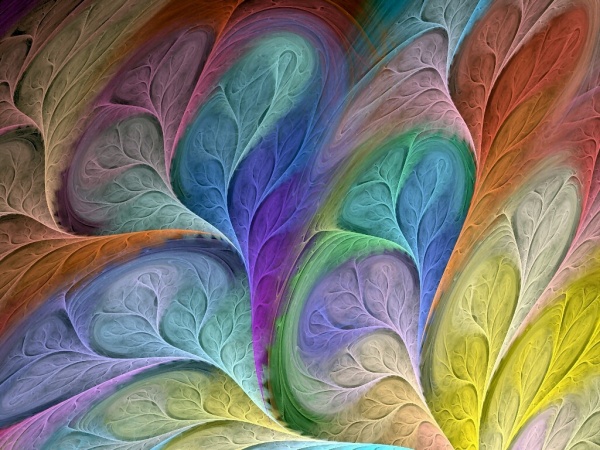
If you arm yourself with masking tape, you can make a fancy geometric pattern on the wall. The tape must be glued to the wall, making a certain geometric pattern. Next, a textured paint of a different color is applied to the wall. After drying, the tape is removed, enjoy the result.
If you run a comb with large teeth along a wall painted with two colors, you can unusually “comb” the wall.
Advice ! To achieve the desired effect, do not wait for the top coat to dry completely.
How to prepare the walls
A full-fledged painting with textured paint of the walls involves them preliminary training. You need to get rid of the old coating, remove dust and dirt from the walls. In the presence of cracks, cracks, they are puttied. Next, a layer of finishing primer is applied to the wall. It is needed to ensure high-quality adhesion of the material to the base of the wall. The primer should eliminate all the irregularities on the surface, it will give the patterns expressiveness and originality.
Moisten the wall with a damp cloth, apply a thin layer of primer on it. After 4-24 hours (drying time of the primer), you can perform a decorative finishing walls. Working with textured paints is different from applying conventional paints to the surface. First, the paint is heated to 20 degrees, in the case of a thick consistency, water is added to it. Time of full drying of paint - 24 hours.

Varieties of textured wall paints
Via similar coatings you can get the following surface options:
- Misuri. Acrylic starch is added to the mixture.
- Relief. Sawdust or crumbs are introduced into the mixture as fillers.
- Marseille wax. You will get a wonderful imitation of old stone, bark. To consolidate the result, an additional glazing paint is applied to the wall.
Common manufacturers of textured paints
amour color. With the help of such compositions, you can make unique interior. Materials have high wear resistance, excellent quality. Manufacturers offer three product options: Perlata, Tactite, Escenta.
Perlata is based on water, is considered eco-friendly material. The paint includes pigments that are similar to pearls, adding an element of luxury to the interior.
Escenta is full of undertones that captivate the eye.
Tactite is unique in that it gives the surface a resemblance to a marble mosaic.
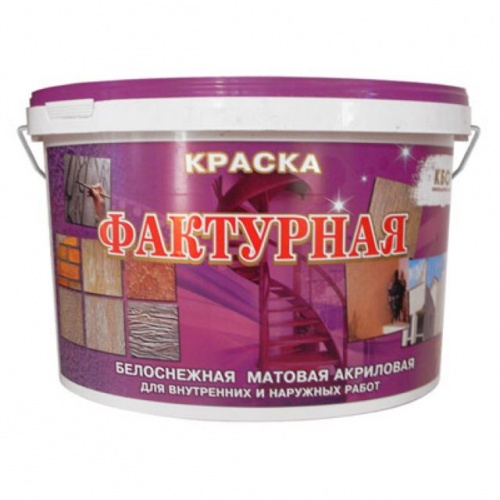
Paritet Decor. The company specializes in the manufacture of fakurnyh materials High Quality. The range of products offered is wide, we will present you some paint options:
Matiere imitates natural wood, expensive fabric. Such compositions are suitable for any environment, introducing an element of luxury into it.
Marrakech combines ancient technique and modern materials, brings harmony and peace to the room. This decorative coating fits perfectly into the Moroccan style, reminiscent of the interiors from the book "A Thousand and One Nights".
Les Perles presents blends that contain a special pigment - mother of pearl. Purity, elegance, color transitions suggest waves, clouds.
Craquelee is an antique canvas finish. This mixture can be used to decorate walls in the old style.

Painting the walls in the bathroom
For bathroom renovation rooms fit dye textured vgt. First you need to make sure that the wall is not subjected to vibration, check its strength. Further, dust, dirt are removed from the walls, all flaws are eliminated with the help of puttying.
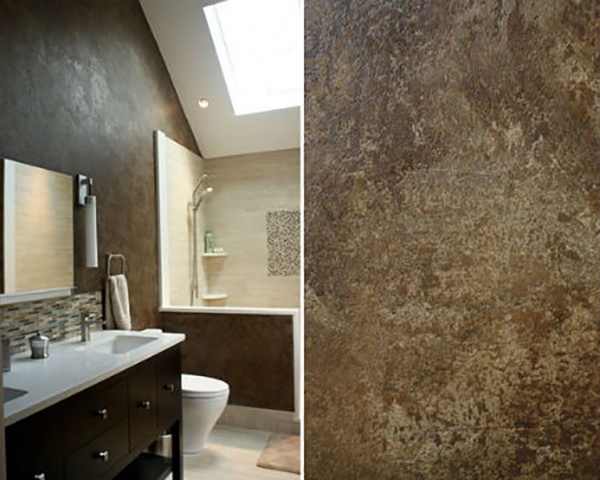
We propose to act according to the following algorithm:
- If the composition is applied with a spatula, then its size should not exceed 15 cm. The best option would be asymmetrical application of strokes.
- Using a stencil is appropriate when creating three-dimensional images. It will take 2-3 hours for each new layer to dry.
The process of working with this material is not complicated, however, it differs somewhat from the application technology. regular paint. Before proceeding with the use of textured paint, we recall the competent pre-treatment of the surface.
Wall preparation
Textured paint is applied in a thicker layer compared to conventional paint, therefore, the requirements for surface strength are also increased. It should be dry (no more than 2% humidity), not dusty, without foreign deposits.
All areas that impair adhesion, such as old cracked, crumbling layers of finishes, whitewash and other paint surfaces, should be removed. If the main cover is Oil paint, the wall should be examined for delamination and swelling. Where the paint is well preserved, its surface must be sanded: for better adhesion, it should become matte.
If, after removing the base coat, you see an ugly wall with rough drops, it should be lightly puttied to even out the irregularities at least to a level of 2 mm. Large cracks are recommended to be reinforced with mesh.
The finished surface must be clean, dry, not "chalky" and without signs of mold.
Tools you will need:
- Drill with mixing attachment.
- Spatula or trowel.
- Rollers to choose from: smooth, rubber textured, foam rubber, porous.
- Decorative brushes.
- The brush is flat.
- Masking tape.
Wall putty
The quality of the study should be set, however, according to the situation: depending on the desired relief, the paint is selected and the thickness of its layer is set. The thinner it is, the more carefully the surface should be prepared.
Wall primer
Its purpose is to improve the adhesion between the wall and the paint. Refer to the materials at acrylic base, for example, Galamix-53 and Galamix-51 or "Universal". If the coating crumbles easily, you can use the special strengthening primer "Profi" or apply 2 layers of the usual mixture. Areas affected by mold and fungus are pre-dried and treated with an antifungal primer, for example, Akkurat 115.
After drying, the primer creates a thin film on the surface, filling and leveling the pores at the base of the wall, which facilitates application. finish coat, increases its durability and saves on material.
Depending on the manufacturer, temperature and humidity in the room, the primer dries for about 6 hours, after which you can proceed to the finishing stage.
Painting walls with textured paint
Before use, mix the textured paint thoroughly, diluting it, if necessary, with water. Part of the water should be no more than 5-10% of the total mass, otherwise the beauty will become fluid and will not hold its shape. The paint is mixed manually or with a drill with a mixing attachment at low speed for no more than 2 minutes.
Note: material consumption depends on the manner of work, the chosen tool, the degree of preparation of the wall. To get an idea of the consumption, make a test plot on working surface.
How to apply texture paint:
- The first step is to define clear structural boundaries for the top, bottom and trim width using masking tape. Also pay attention to the protection of surfaces that are not to be decorated.
- Lighting - important factor successful works. It should be sufficient and as close as possible to the future. permanent lighting intensity and angle of incidence. The fact is that the relief of the paint is “read” precisely due to the direction of the light, and proper lighting will help create the desired effect on the wall. Both daylight and electric light should be considered.
- If during work you make technological breaks, containers with paint at this moment should be tightly closed.
- The paint is applied with a spatula, roller or spray. If you use a roller, then it should be smooth or with a hard short pile up to 1 cm long. The spray nozzle should be at least 3 mm in diameter. It is recommended to keep the roller in the same direction during the entire application stage in order to form a consistent relief.
- If you use a spatula, then the pattern will be applied in the next step, and not simultaneously, as is the case with a roller. Enough is applied to the spatula a large number of mixture, which is applied with a layer of 3 mm, and then, within an hour and a half, you have the opportunity to experiment with texture, correct and add, change rollers and other tools for creating relief.
- It is correct to start work from the corner of the plane to the opposite corner.
- If necessary, painting with textured paint is carried out in two layers, while the second layer should be applied after the first has completely dried, that is, after 3-10 hours.
- To avoid the formation of joints, work within the same plane should occur in one approach according to the “wet on wet” principle.
- After work, the tool must be rinsed immediately with water.
- The time for complete drying of the paint under normal conditions is 24 hours. It acquires final hardness and uniform polymerization only after 14 days.
Remember: the pattern and the resulting texture depend on the material of the roller and the speed of its movement along the wall.
Getting a drawing
Method 1. Textured paint is applied to the wall, as in the photo, using a trowel or spatula with a layer of 2-3 mm. Then the surface is treated with the selected texture roller, by rolling it from the bottom up.
Method 2. The paint is applied in the same way as the first one, an adhesive spatula is taken with teeth and a relief is given with wave-like movements. You can describe semicircles, waves, layer them and change direction.
Method 3. Relief "Bark beetle". Texture paint is applied in a thin layer of 1 mm using a wide spatula. Then, pressing it tightly against the wall, the excess mixture is removed, as a result of which the large components of the fractions leave a path behind them.
Method 4. The wall is pre-painted with textured paint, or, conversely, contrasting color. In this case, when scratching, it will show through bottom layer. For example, lilac texture paint is applied to a yellow base. It is also worth experimenting with shades of the same color: light gray and darker, powdery and rich beige.
You can additionally decorate the finished textured wall by mixing an ordinary transparent varnish with a special creative paste. With the help of this technique, it will be possible to notice how the shade of the wall changes from a change in the angle and intensity of lighting.
Technical features of the paint:
- It is forbidden to mix anything and add it yourself to the paint.
- Do not apply the material to the facade in particularly hot or rainy weather, or under direct sunlight.
- During street work, it is necessary to check the serviceability of storm and drainage structures.
- Condensation must not form on the work surface.
- The ambient temperature must be between +5°C and +30°C.
- At internal works ah, good ventilation should be ensured.
Tip: When painting the facade, it is better to choose pastel shades. texture paint: First, it harmonizes with environment, and secondly, from prolonged exposure to light, any bright color burns out.
Prepare exactly the amount of material that is guaranteed to be enough for one layer. If you have more than one container, make sure that the color of the mixture is the same in all of them. Applying textured paint is a crucial step: use the tutorial videos and consult with those who already have experience in this.
__________________________________________________
Recently popular, beautiful and affordable way of decor is textured paint.
In composition, this is a coarsely dispersed mass, which includes acrylic and various mineral additives - scaly, drop-shaped, etc. Due to the additives, the treated surface is textured. The paint is applied with a spatula, roller, brush, using a pneumatic sprayer. Depending on the source material and the staining method, it differs end view surfaces and paint consumption.
The advantages of the method include:
- surface treatment speed;
- a variety of final decor options;
- Using textured paint, it is easy to mask minor wall defects.
There are also disadvantages: consumption (up to 30% more than conventional paint coating). If you want to change the decor, you will have to completely clean off the previous paint, otherwise you will not be able to achieve a beautiful textured layer.
Applying textured paint
It is better to put the first layer with a spatula, but it is better to use it if the paint is very thick and embossed, and the filler is rough. The final texture of the surface will depend on whether the trowel is hard or soft. You need to apply paint in single strokes, it is better to determine the directions in advance. You can create interesting relief options.
If you are going paint with a brush, it is better to take a wide one. The surface must be prepared (cleaned, plastered, primed). Apply paint in wide strokes - first in a horizontal, then in a vertical direction (or vice versa). You can draw patterns with a brush.
For roller painting it is desirable to acquire three rollers for textured paint at once: two are identical, one is smaller. The paint is applied with vertical movements with a large roller, irregularities are corrected with a small one. Excess paint (excess layer) is removed with a clean roller.








You can buy paint directly from the sprayer. Before applying it to the wall, it is better to test it on a small surface, so you will find out which layer to spray and in which direction it is better to do it.
Tip: there is an option to apply paint with one more, not quite traditional way- sponge. The depth of the relief, its texture will depend on how granular the sponge you have chosen. You can "draw" with a sponge using a stencil.
Finally, you can prepare textured paint with your own hands. To do this, you buy regular acrylic in the color you need and mix it with filler. The filler is also sold - for example, granite crystals, sifted sand, etc.
Options - combined surface: a combination of ordinary paint with separate textured inserts. Or a combination of textured areas painted different ways- let's say the main surface is sprayed, and individual fragments are painted with a sponge on a stencil or a brush.
Wall decoration with textured paint is a successful and modern solution, allowing you to create an interesting relief on the surface, as well as relieving you of the need to carefully pre-prepare the wall - the density of the material is quite capable of providing a masking effect for minor flaws.
Basic hallmark textured finishing material is precisely its ability to give surfaces an interesting relief. Structural wall paint is extremely popular due to its many benefits:
- duration of operation - textured paint for wall decoration lasts an average of 10 years, but traditional wallpaper - half as much. And then, those wallpaper canvases that lose color will have to be replaced, but walls finished with textured paint can simply be painted;
- decorative textured wall paint is highly resistant to mechanical stress and is not afraid of high humidity;
- the surface finished in this way has a harmonious appearance, creating a single composition;
- painting the walls in the kitchen with textured paint - good decision for those who are familiar with the problem of washing: such a surface is easy to clean, unlike paper wallpaper;
- the breadth of the choice of shade - it is very simple to create any tone you like - just add the desired acrylic or water-based paint part;
- the material is absolutely safe, does not cause allergic reactions;
- textured paint is extremely versatile: it has an aesthetic appearance (suitable for finishing a status living room), universal (easy to clean, therefore used in kitchens), has high level moisture resistance (can be used even in bathrooms);
- the material is practical - it has an antistatic effect that repels dust from the surface.
The only relative disadvantage is the need to prepare the walls for applying the material. But this requires any finish, and structural paint, on the contrary, does not force us to carefully align the walls, as it effectively fills small cracks. And, of course, the cost: it is relatively high, since the material consumption is about 1 kg per square meter.
What effect can be done
Textured wall painting with your own hands - not complicated at all procedure, and the variety of effects that can be achieved is truly amazing:
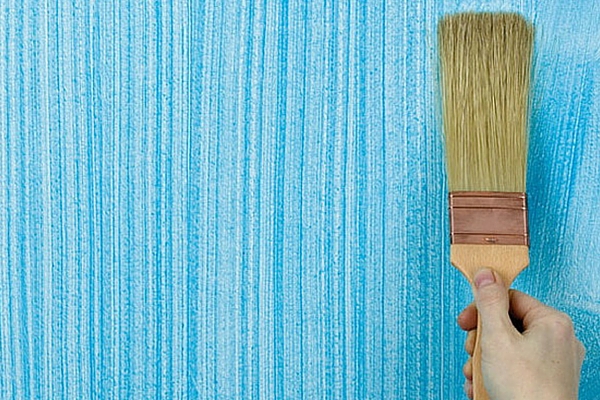
How to choose
Often, instead of the expected wow effect, we get something obscure, remotely resembling the desired result. As a rule, the whole point is that the wrong composition was chosen. To avoid annoying surprises, it is worth studying the features of certain types of coatings:
- on the mineral basis. Most affordable option made on the basis of lime and cement. It is mainly used for finishing exterior walls with a structural roller;
- silicone based. Universal remedy, with the same effect is used for both outdoor and indoor work;
- silicate paints. One of the most expensive, but by far the most practical option- such a coating will calmly withstand temperature changes, high humidity and other hardships;
- acrylic paints. They are completely ready for use: just take a roller for painting the walls, tint the composition if necessary, and work.
Application steps
By their own quality characteristics texture paints are very close to textured plasters. But the first ones are a more “thin” version, therefore they have increased plasticity. When the material is applied, but not yet dry, we form a relief using textured special rollers for painting walls - thanks to them, intricate patterns appear on your walls, reminiscent of exotic plants, wrinkled leather or even textiles.
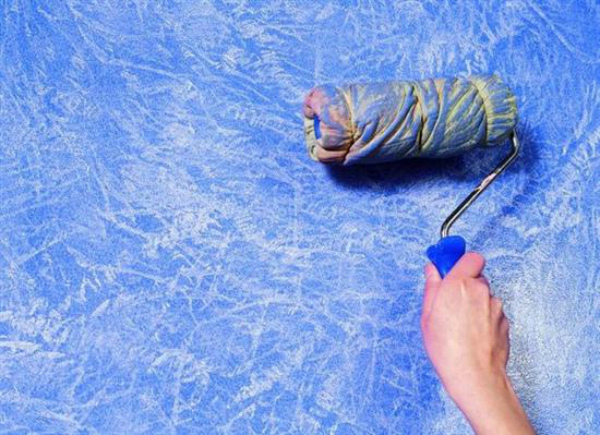
To give the texture depth, you can add a contrasting shade of paint in some places on the surface. True, a successful result is rarely possible for someone who first engaged in this type of activity.
So be sure to test for small area surfaces. That's all, it remains to wait for the complete drying of the applied material. As a result of such simple manipulations, you will get an original and non-standard surface, which none of your friends will certainly boast of. Good luck with your experiments and bold decisions!


